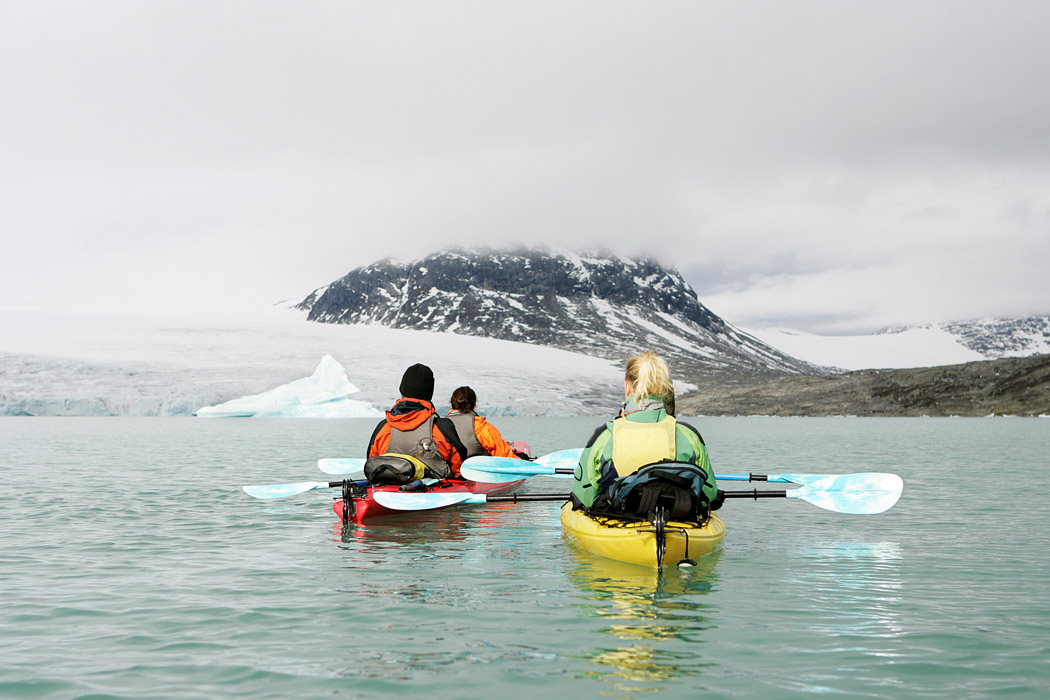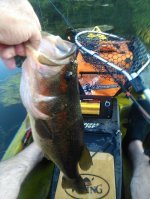Winter Kayaking
Cold Water Survival
Winter kayaking is extremely rewarding. You can see things you would never be able to see any other time of year. Kayaking is an amazing sport that doesn't have to end just because winter approaches. People kayak in winter safely every year. However, there are important safety concerns that must be taken in account.
These concerns are the things no one likes to talk about, but is on everyone's mind. Winter brings its own set of difficulties and the risks are much greater in winter than in summer. Not just cold air, but cold water is the real danger and is what you must prepare for. Never kayak alone in winter.
Winter Kayaking - Prepare for the Swim
There is a saying that goes with kayaking in winter. The saying is "Prepare for the Swim". It means just what it says, always prepare for the worst case scenario - falling into the water!
There are Coast Guard guidelines that should be learned and followed.
Coast Guard's 1-10-1 Rule for Water 50 Degrees or Colder
If you fall into the water while kayaking, the 1-10-1 Rule means:
You have "1" minute to stop panicking
You have "10" minutes of physical ability to save yourself
If you remain in the water you have "1" hour of consciousness left
“It is impossible to get hypothermic in cold water unless you are wearing flotation, because without flotation – you won’t live long enough to become hypothermic.”
Mario Vittone - USCG Marine Safety Specialist
For winter kayaking, here is a good rule to follow: Before you get into the water until after you are again standing on dry land make sure you are wearing your life vest. A PDF can make the difference between living and dying in the water, regardless of how well you think you can swim.
What to Expect if You Fall into Cold or Ice Water
Phase One - Instant Cold Water Shock
Cold water on the body produces an instant gasp of air. Many people (estimates say 20%) may die within one minute of the "gasp" because they suck in water into their lungs. In some people, the cold can trigger a heart attack.
Phase Two - Physical Ability Becomes Increasingly Limited
You will have about 10 minutes to swim to shore, get back to the kayak and perform a reentry or be rescued. After 10 minutes the body's ability to move in rhythm, as in swimming, is compromised. With each passing minute it gets worse. It depends on your physical condition, yet even in superb condition, without a vest your chances of survival become extremely serious. If you are wearing a life vest, even in ice water, you can survive for about an hour or longer.
Phase Three: Remaining Conscious
This is where a life vest makes all the difference. Even in very cold water, if you are wearing a life vest, you will have about an hour before hypothermia causes loss of consciousness. Without a vest in cold water, forget it. Always wear a PDF.
After Being Rescued or Reaching Shore
Get out of the wet clothes as soon as possible. Put on dry clothes and get wrapped in blankets. Lay horizontally so the heart doesn't have to work as hard getting cold blood to and from the extremities.
What to Wear While Winter Kayaking
Outer Shell should be a dry suit. Dry suits are water tight and have a layer of air between the body and the dry suit shell. Dry suits are extremely valuable in worth their weight in gold if you end up in the water.
DO NOT use a wet suit. Wet suits allow in a thin layer of water that is then warmed by the body. "Farmer John" suites are the thickest and used by scuba divers in water down to 60 degrees. Thin suits are not effective in keeping you warm. While they is better than nothing in very cold water, unless you are used to a wet suit, you will see they can be restrictive, difficult to swim in and you can easily overheat. While wet suites are perfect for divers, due to how they move and propel themselves in the water, paddlers and swimmers will find them extremely taxing. You will be far better off in a dry suit.
Wear Wool Clothing Wool has the ability to keep you warmer even when wet. Do not warm denim (blue jeans). Wet jeans will suck all the warmth from your body.
Check out the video produced by the USCG on "Cold Water Boot Camp" Training.
I'd like to thank the Coast Guard where much of this information was taken. You can visit their page at USGC Cold Water Survival
Winter Kayaking back to Hammerhead Kayak Supply
Copyright 2015-2025 Hammerhead Kayak Supply's Legal Information Our Privacy Policy and Terms of Use |


